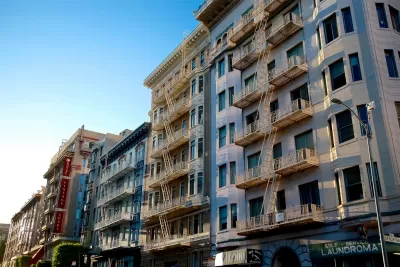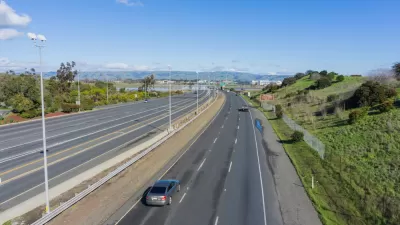The range of cities that have recently removed parking mandates could help motivate others that are eyeing new parking policies.

Michael Andersen looks at new developments in parking reform as it moves, in his words, from the "realm of the radical" to that of "early adopters, the ones who know a good idea when they see it even though it’s off-the-wall."
San Francisco and Minneapolis recently voted down parking mandates for residential developments. While Buffalo, New York, and Harford, Connecticut, took action last year to eliminate minimum parking requirements, Andersen says those cities were motivated by underinvestment and a desire to spur economic activity after the Great Recession.
Meanwhile, San Francisco and Minneapolis are cities with booming economies where the lift on parking mandates will help funnel money into housing development and provide some relief to residents facing affordability challenges.
Andersen believes these changes happening in both larger and smaller cities set a good example for cities across the country:
It proves parking reform is not just a good idea for cities with very different problems, it’s also politically feasible in cities with very different problems. Minneapolis and San Francisco show the way for booming Cascadian cities like Seattle and Richmond. Hartford and Buffalo set examples for flagging ones like Anchorage and Aberdeen.
He hopes the momentum continues and these early milestones will pave the way for other cities considering similar parking reform.
FULL STORY: 2018 WAS THE YEAR PARKING REFORM WENT FROM MINOR TO MAJOR LEAGUE

Maui's Vacation Rental Debate Turns Ugly
Verbal attacks, misinformation campaigns and fistfights plague a high-stakes debate to convert thousands of vacation rentals into long-term housing.

Planetizen Federal Action Tracker
A weekly monitor of how Trump’s orders and actions are impacting planners and planning in America.

In Urban Planning, AI Prompting Could be the New Design Thinking
Creativity has long been key to great urban design. What if we see AI as our new creative partner?

King County Supportive Housing Program Offers Hope for Unhoused Residents
The county is taking a ‘Housing First’ approach that prioritizes getting people into housing, then offering wraparound supportive services.

Researchers Use AI to Get Clearer Picture of US Housing
Analysts are using artificial intelligence to supercharge their research by allowing them to comb through data faster. Though these AI tools can be error prone, they save time and housing researchers are optimistic about the future.

Making Shared Micromobility More Inclusive
Cities and shared mobility system operators can do more to include people with disabilities in planning and operations, per a new report.
Urban Design for Planners 1: Software Tools
This six-course series explores essential urban design concepts using open source software and equips planners with the tools they need to participate fully in the urban design process.
Planning for Universal Design
Learn the tools for implementing Universal Design in planning regulations.
planning NEXT
Appalachian Highlands Housing Partners
Mpact (founded as Rail~Volution)
City of Camden Redevelopment Agency
City of Astoria
City of Portland
City of Laramie





























